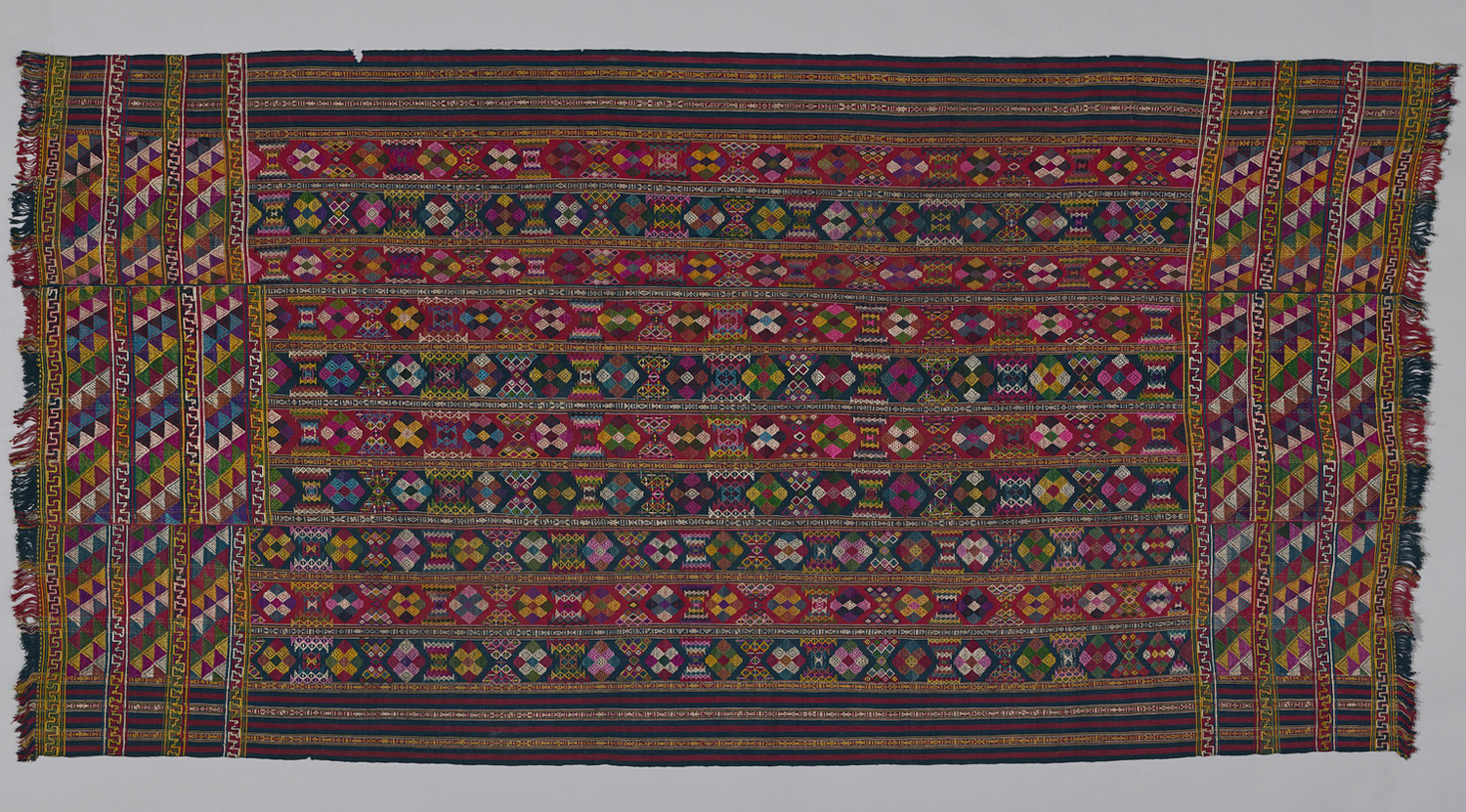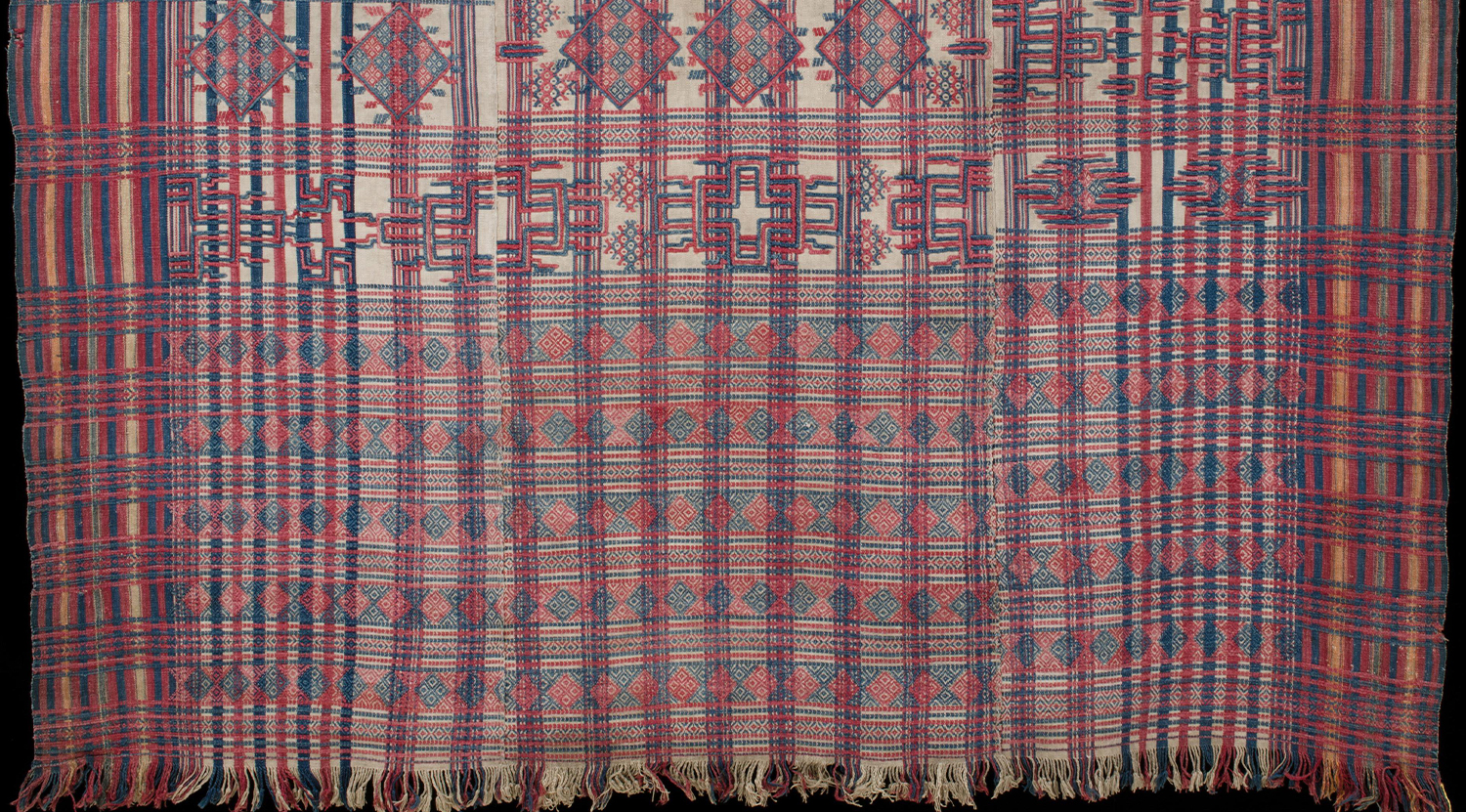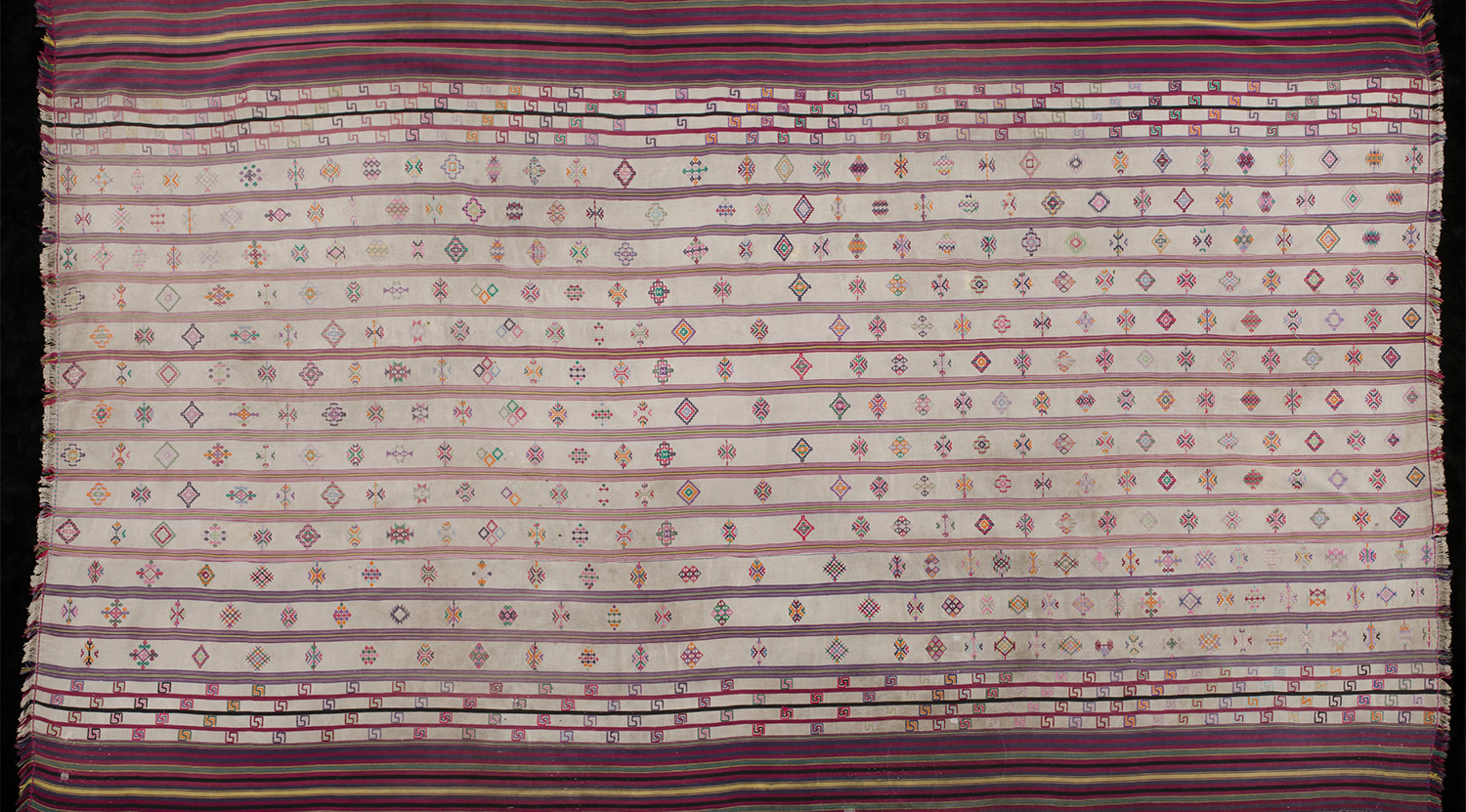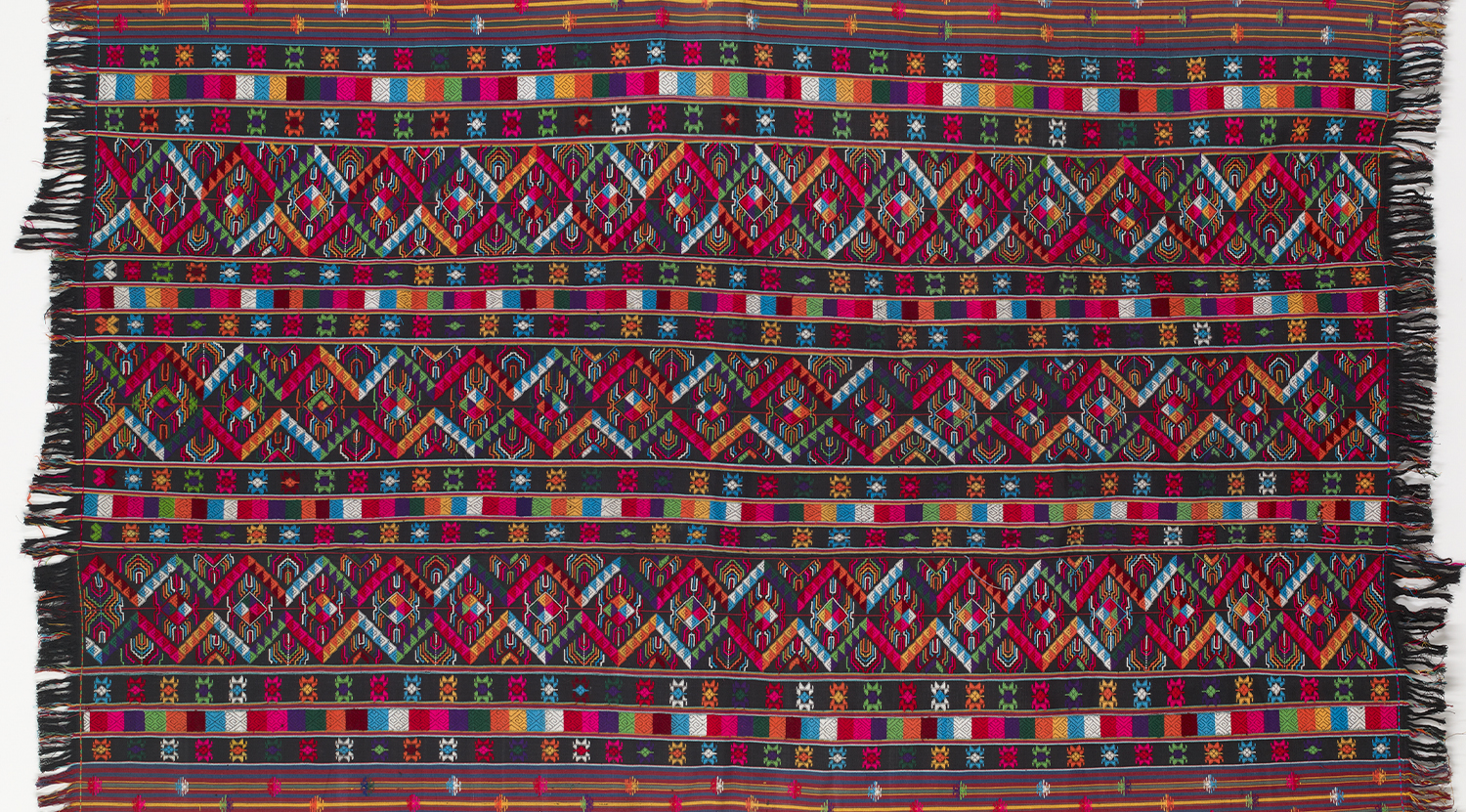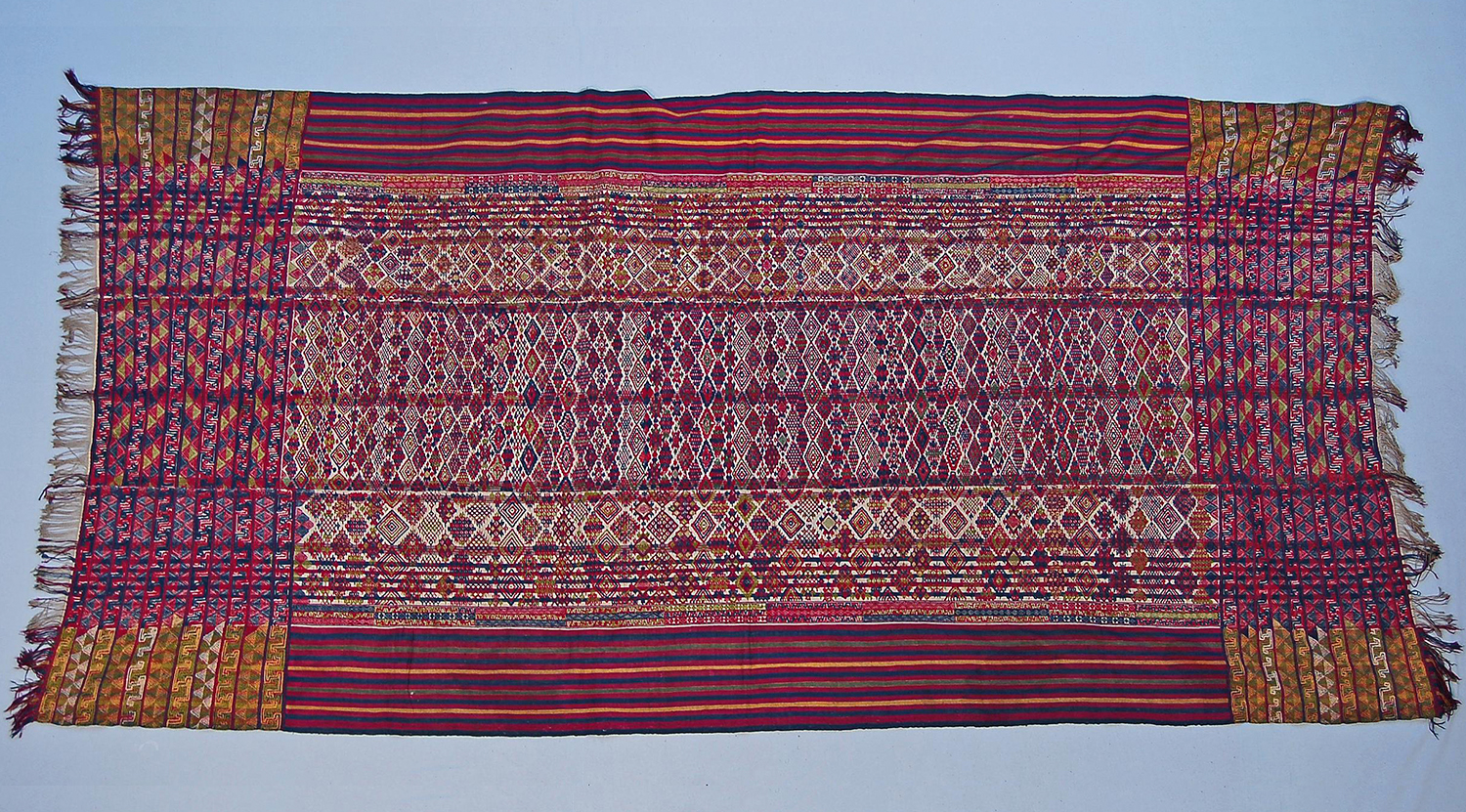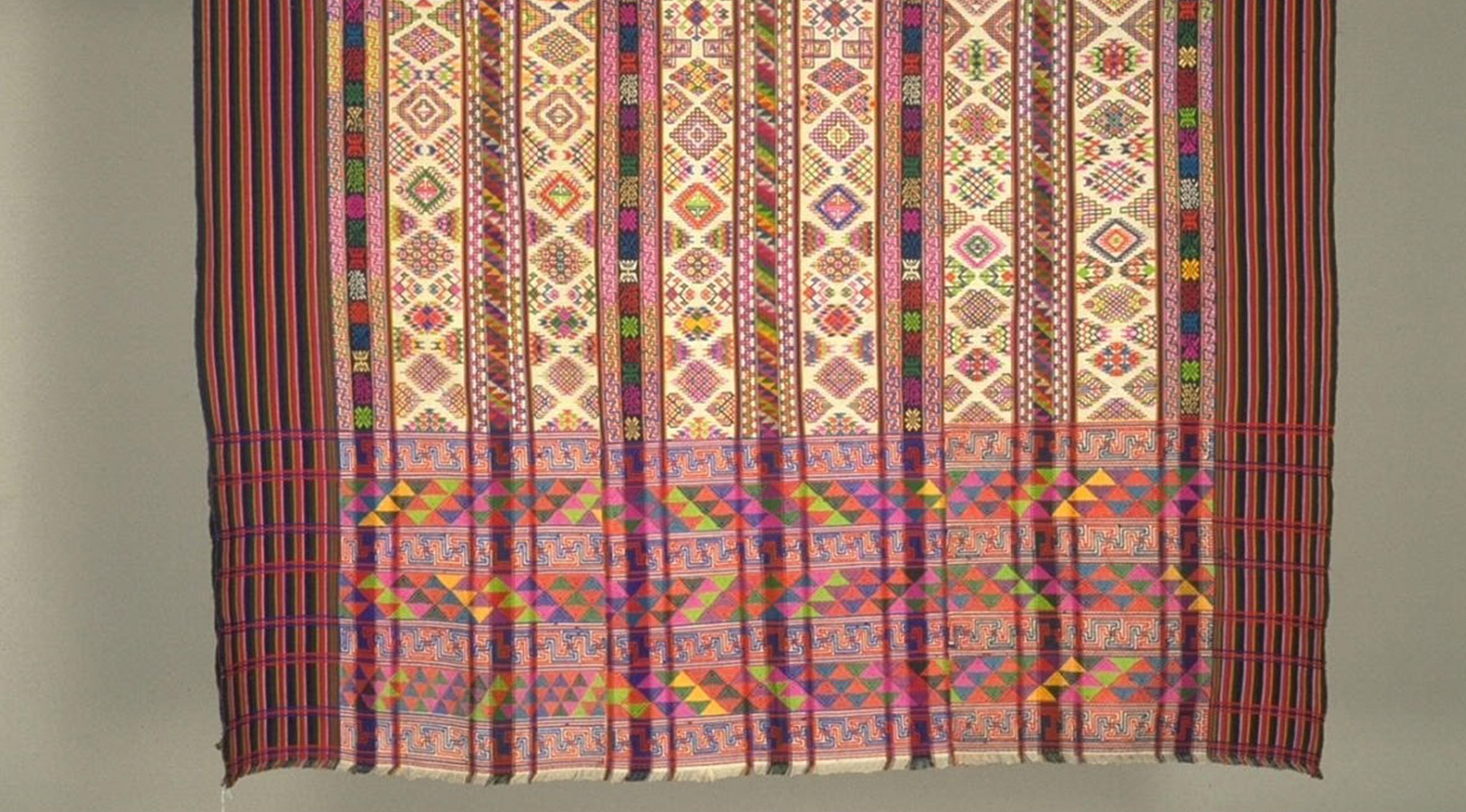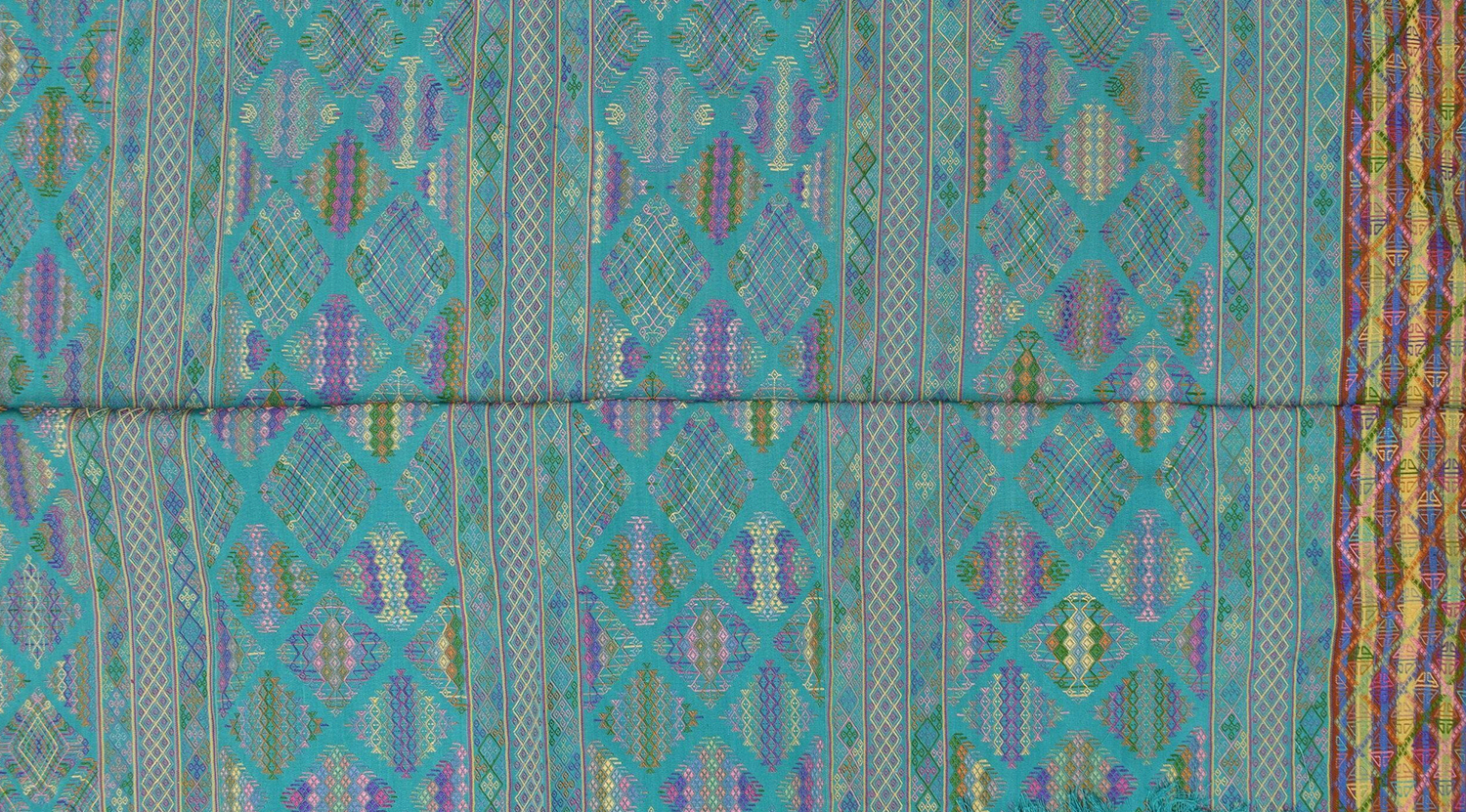ARTICLE
Kushuthara
A traditional silk textile native to northeastern Bhutan, kushuthara (or kishuthara) is an intricately woven fabric made and worn by women. Deriving its name from the Dzongkha word kushu, referring to ‘elaborate patterning’ or ‘brocade’, kushuthara is considered the country’s most ornate and highly valued fabric. Made as a large rectangular cloth that is worn as the unstitched kira, a wrapped garment that is Bhutan’s national dress for women, kushuthara is often synonymous with the type of kira that uses this fabric. While it is thought to date back to at least the seventeenth century, when it was used to make a simple tunic known as kushung — using cotton and nettle rather than silk — it was popularised in the twentieth century under the influence of the Bhutanese royal family, who patronised indigenous weaving traditions and influenced popular fashion in the country. Originally comprising intricate patterns and motifs in blue and red over a white silk ground, kushuthara now uses a variety of colours and designs.
The knowledge of kushuthara weaving — exclusively a women’s domain — is passed down intergenerationally, with girls starting to be trained in it at a young age. It is an elaboration on the striped thara weave, with the additional weft patterning giving rise to one of Bhutan’s most distinctive woven textiles. Indigenous to the Lhuntse district of northeastern Bhutan, specifically the villages of Kurtoe and Khoma, kushuthara weaving traditionally takes place on a backstrap loom.
It is made using an extra-weft technique called thrima, in which weft threads of various colours are added to the ground weft. This is done by lifting certain warp threads with a stick and coiling the new weft threads around them in a discontinuous manner to create a variety of motifs and patterns. This results in a raised weave that resembles chain-stitch embroidery, with the motifs showing up only on the front of the fabric. A kushuthara piece is woven in three parts that are sewn together lengthwise to be worn as a kira.
Kushuthara traditionally used white silk as the ground, into which red and blue thread — dyed using lac and indigo respectively — was introduced to create patterns. From around the middle of the twentieth century kushuthara was made in other colours, such as blue (ngosham), green (jangsham), red (mapsham) and black (napsham). With the advent of synthetically dyed yarn, a wide range of colours are used in kushuthara, with pastel colours being especially popular among younger women in recent years. To make it more affordable to the wider Bhutanese public, contemporary kushuthara is often woven using cotton or synthetic yarn as a ground instead of silk, which is more expensive.
Kushuthara fabrics feature an extensive variety of patterns, with weavers drawing on a large number of motifs that they employ in unique combinations. Alongside geometric designs such as diamond, floral and lattice shapes — associated with Bhutan’s national emblems — they commonly feature auspicious Buddhist motifs such as swastikas. The kushuthara used for making kushungs also included human and animal figures as motifs, which are rarely used today. Kushuthara fabrics traditionally feature dense patterning on the entire surface, which makes them extremely time- and labour-intensive, with each one traditionally taking up to a year to weave. To reduce the time as well as the cost involved in the production of the textile, modifications have been made, such as reducing the size of the motifs and limiting the pattern to the ends or corners of the textile while leaving the middle panel relatively empty.
Some of the earliest examples of kushuthara fabric are seen in the kushung, a centuries-old garment that was worn by women belonging to the Lhuntse and Trashiyangtse districts. This comprises two kushuthara panels sewn together lengthwise and folded over at the shoulders, with a hole cut out for the head and neck. The edges on the sides of the body were sewn together leaving an arm hole on each side. Today kushuthara is mainly worn as the kira, an unstitched garment for women that is wrapped around the body and fastened at the shoulders. For a kira, three kushuthura panels are sewn together lengthwise and the edges are given long fringes. It is worn so that the warp stripes run horizontally.
While little is known about their origins and early development, kushuthara and the kira were popularised in Bhutan after Ugyen Wangchuck ascended the throne as the first king of Bhutan in 1907 and the women of his family were seen wearing the dress. The family were keen patrons of local textile traditions and hailed from Kurtoe, an early centre of fine kushuthara weaving. As the Wangchuk women wore the kira using kushuthara for formal occasions, the fabric and the dress were adopted by other members of the nobility and gradually other classes, with the kushuthara itself evolving to become more accessible to the masses. In 1989, the kira was declared Bhutan’s national dress; women wear the kira in a variety of textiles, and typically wear kushuthara kira on special occasions.
While it is the older women with decades of training who traditionally undertake elaborate kushutharas, the younger generation is being encouraged to pursue the craft, particularly as traditional kushutharas have found a profitable market today. Popular within the country for its use in the national dress, the fabric has also gained international recognition. While the most highly valued kushuthara are made by small-scale weavers, particularly in Khoma, their demand has led to several weaving centres producing these fabrics using synthetic materials on a larger scale.
Bibliography
Altmann, Karin. Fabric of Life: Textile Arts in Bhutan; Culture, Tradition and Transformation. Berlin: De Gruyter, 2016.
Asian Art Museum. “Tunic (Kushung).” Google Arts & Culture. Accessed December 20, 2023. https://artsandculture.google.com/asset/tunic-kushung/EAF5qUlbVEVtcg.
Bean, Susan S., Diana K. Myers, and Rinzin O. Dorji. “Modeling a Future for Handmade Textiles Bhutan in the Twenty-first Century.” Textile Museum Journal 46 (2019): 52–73.
Harrison, Peter. Fortress Monasteries of the Himalayas: Tibet, Ladakh, Nepal, and Bhutan. Fortress 104. Oxford; New York: Osprey Publishing, 2011.
Tshering, Karma Deki. “Kushuthara: The Most Intricate Textile of Bhutan.” The Textile Atlas: Stories. Accessed December 24, 2023. https://www.thetextileatlas.com/craft-stories/kushuthara-bhutan.
Waddington, Laverne. “Backstrap Weaving – Home!” Backstrap Weaving, November 21, 2013. Accessed December 11, 2023. https://backstrapweaving.wordpress.com/2013/11/21/backstrap-weaving-home/.




